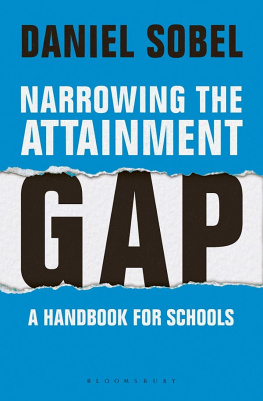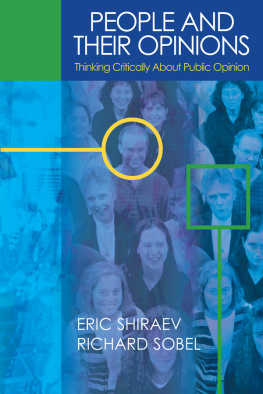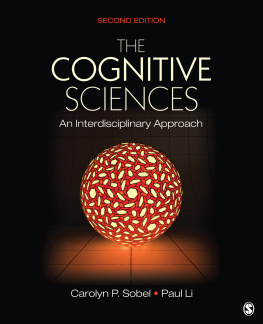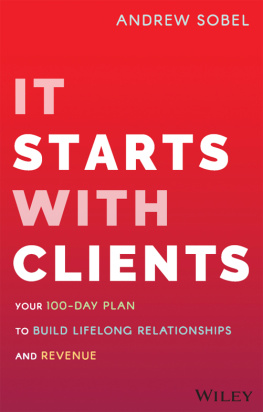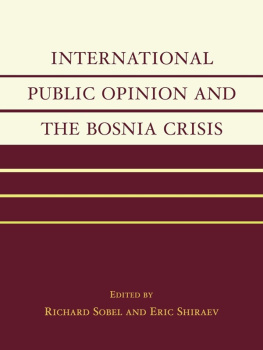Sobel - Narrowing the Attainment Gap
Here you can read online Sobel - Narrowing the Attainment Gap full text of the book (entire story) in english for free. Download pdf and epub, get meaning, cover and reviews about this ebook. City: London, year: 2018;2017, publisher: Bloomsbury Publishing PLC, genre: Children. Description of the work, (preface) as well as reviews are available. Best literature library LitArk.com created for fans of good reading and offers a wide selection of genres:
Romance novel
Science fiction
Adventure
Detective
Science
History
Home and family
Prose
Art
Politics
Computer
Non-fiction
Religion
Business
Children
Humor
Choose a favorite category and find really read worthwhile books. Enjoy immersion in the world of imagination, feel the emotions of the characters or learn something new for yourself, make an fascinating discovery.
Narrowing the Attainment Gap: summary, description and annotation
We offer to read an annotation, description, summary or preface (depends on what the author of the book "Narrowing the Attainment Gap" wrote himself). If you haven't found the necessary information about the book — write in the comments, we will try to find it.
Sobel: author's other books
Who wrote Narrowing the Attainment Gap? Find out the surname, the name of the author of the book and a list of all author's works by series.
Narrowing the Attainment Gap — read online for free the complete book (whole text) full work
Below is the text of the book, divided by pages. System saving the place of the last page read, allows you to conveniently read the book "Narrowing the Attainment Gap" online for free, without having to search again every time where you left off. Put a bookmark, and you can go to the page where you finished reading at any time.
Font size:
Interval:
Bookmark:

OTHER TITLES FROM BLOOMSBURY EDUCATION
Leading from the Edge: A School Leaders Guide to Recognising and Overcoming Stress by James Hilton
Creating Tomorrows Schools Today by Richard Gerver
The A-Z of School Improvement by Tim Brighouse and David Woods
8 Qualities of Successful School Leaders by Jeremy Sutcliffe
The Reality of School Leadership: Coping with the Challenges, Reaping the Rewards by Richard Parker
Achievement for All: Raising Aspirations, Access and Achievement by Sonia Blandford and Catherine Knowles
Contents
Introduction
The purpose and structure of the book
The attainment gap is one of the most insidious social injustices in the developed world, responsible for concreting the growing inequality of our societies. Schools everywhere are obliged to tackle it, if not officially by their national or local government, then morally. In England, from 2010 to the present, the Department for Education has grant. The grant allocates funding to schools on the basis of the number of their pupils deemed to come from disadvantaged backgrounds, and asks schools to demonstrate how the money is helping to close the gap.
But seven years on from the introduction of this policy, and despite the reams of academic research conducted all around the world on the attainment gap, there is still a limited amount of practical guidance out there for school leaders on how to actually respond.
This book aims to guide schools through the practical steps they can take to narrow their gap in a cost-effective and sustainable way. It will, I hope, offer insights to anyone working on attainment or broader inclusion issues; but its primary intended audience is senior school leaders and leaders of groups of schools, such as heads of education at local authorities in the UK, superintendents in the US, CEOs of multi-academy trusts and leaders of teaching school alliances. It will be equally useful for governors, who often know very little about the causes and impact of the gap, and policy mandarins removed from real practice. I had one final specific role in mind when writing: the pupil premium reviewer or consultant. In England, a school can be asked to undergo a pupil premium review by the local authority or national inspectorate, and I have seen far too many of these done with little sophistication and minimal impact.
Whilst the book is rooted in my experience of working in the education sector in the UK, the problems I describe are sadly far from UK-specific. My solutions and resources are, with a little adaptation, applicable everywhere.
The book is divided into three sections. , finally, contains instructions for carrying out an attainment review and the book ends with a summary and some concluding thoughts.
About me
I came out of my schooling with no A levels and read my first book aged 18. Gradually, from that point on, I fell in love with reading and study in general, and managed to get myself onto a masters course in education psychology at the Institute of Education, University of London. I went on to take four postgraduate courses in psychology and education and eventually ran out of money in the middle of doctoral training, at which point I decided to teach full time.
I fairly quickly became a SENCO (special educational needs coordinator) and was dismayed by how much of the job was pointless paperwork and meetings that took up time whilst students continued to struggle. An Ill do it my way attitude kicked in and I started reinventing the paperwork and the meetings to better support my students. Over time, I was asked to support other schools, to write about my work for the education press, and eventually to consult for the Department for Education, the European Union and governments abroad.
When this became too much to combine with being a senior leader in a school, I left and, somewhat hesitantly, became a full-time consultant. I formed Inclusion Expert, a small firm a one-man band at first focused on providing targeted training, consultancy and resources for schools across all areas of inclusion. Over the last few years, we have grown rapidly to encompass a team of highly experienced expert practitioners, who together have supported about one thousand schools in the UK and abroad.
We carry out attainment gap and special needs reviews; we train school leaders and teachers; and we lead workshops in person and online. But for us, the real change comes only in the implementation of our recommendations and systems by the school itself. It is the goal of my team to work with each school to make it an Inclusion Expert in its own right. If eventually our company becomes superfluous to the needs of most schools, Ill be thrilled.
I have drawn on these macro themes throughout the book. A lot of other educational consultants and leaders home in on the traditional curriculum-based functions and their mechanics. In the special needs arena, this translates into emphasising knowledge of autism, dyslexia and other special educational needs, and in the classroom, this discussion ends up focusing on assessment, progress indicators and so on.
The Inclusion Expert approach is predicated on three key assumptions:
The key barriers to inclusion are time, money and attitudes not the SENCOs knowledge of the various special educational needs he or she may encounter. We believe that differentiation and personalised learning should ultimately save a teacher time and save the school scarce funds. Once teachers and senior leaders witness this, hearts and minds are won over, the whole system becomes efficient and wide reaching, and effective inclusion can begin. Our method is to reduce a schools paperwork by an average of three quarters; this sounds astonishing, but what is left is all that is needed.
Inclusion and the attainment gap are mostly to do with soft data. Hard data is useful for absolute measurement; thats it. The route to success is through soft data: it tells us the real motivations and barriers for a student; it highlights the quality of engagement of the student in any lesson or intervention; and it guides the teacher to directly meet the specific needs of the student. A focus on soft data often entails a mental shift for school leaders who may be rooted in hard data, but through this shift a school can begin to best improve its inclusion approach.
Two fundamental challenges underlie all inclusion issues. Having visited hundreds of schools, I know that there are only ever two main themes that crop up time and again: classroom teaching and whole-school systems. Outstanding teaching can halve a schools attainment gap. Inclusion Experts approach to whole-school systems is to focus on how to assess need, strategically deploy staff and resources, and evaluate and demonstrate impact. When these two themes are addressed together, and through planning that is bespoke to each schools unique setting and context, the results are transformational.
In writing this book, I have drawn on several Inclusion Expert resources, including the Pupil Premium Handbook (which we launched at the House of Commons, and which guides schools in spending their funding) and the research behind my regular articles for Headteacher Update, SecEd and The Guardian. By far the most important resources, however, are the inspirational teachers, leaders and students with whom Ive had, and hope to long continue to have, the fantastic privilege of working.
Terms in bold are defined in the glossary at the end of the book.
Next pageFont size:
Interval:
Bookmark:
Similar books «Narrowing the Attainment Gap»
Look at similar books to Narrowing the Attainment Gap. We have selected literature similar in name and meaning in the hope of providing readers with more options to find new, interesting, not yet read works.
Discussion, reviews of the book Narrowing the Attainment Gap and just readers' own opinions. Leave your comments, write what you think about the work, its meaning or the main characters. Specify what exactly you liked and what you didn't like, and why you think so.

